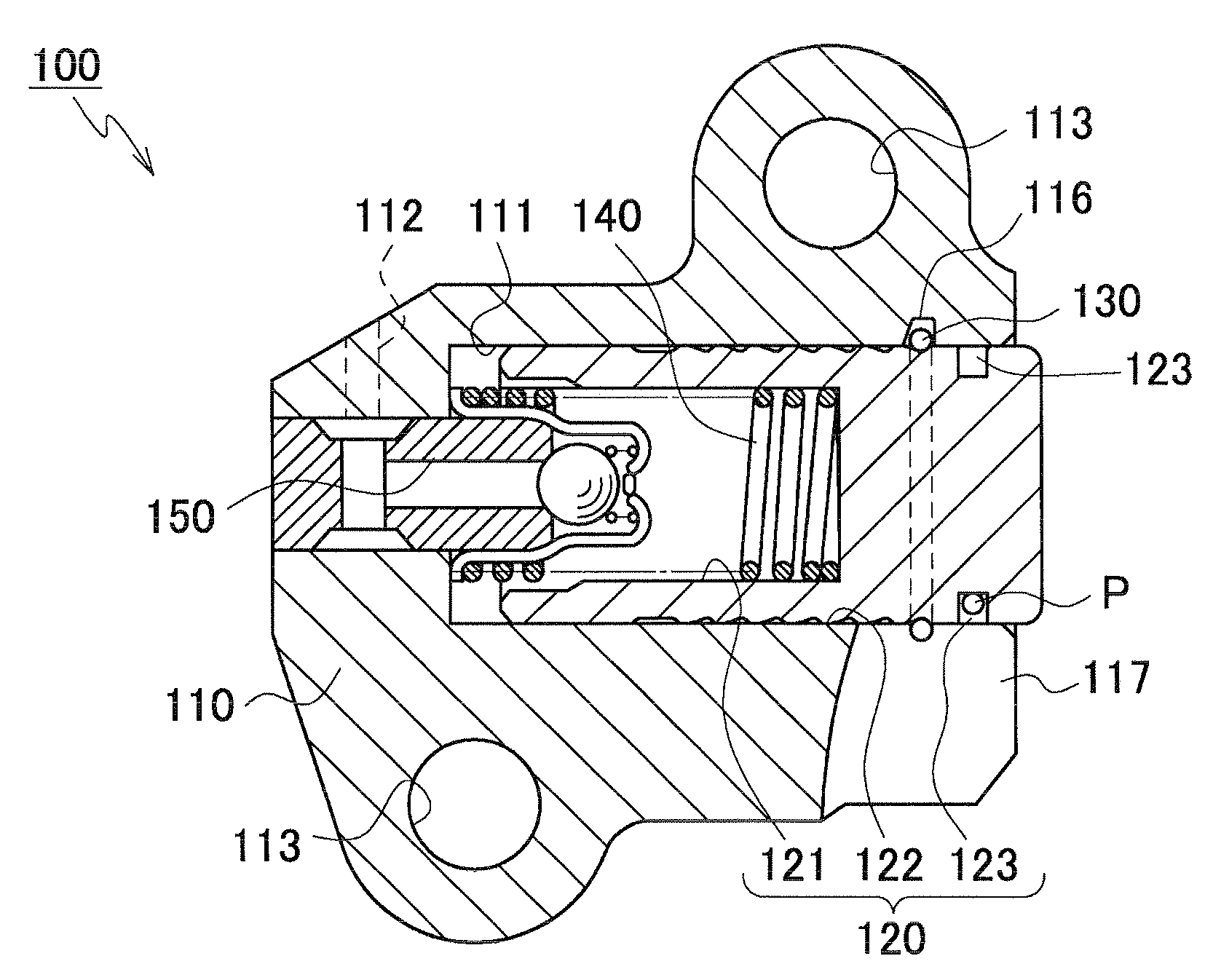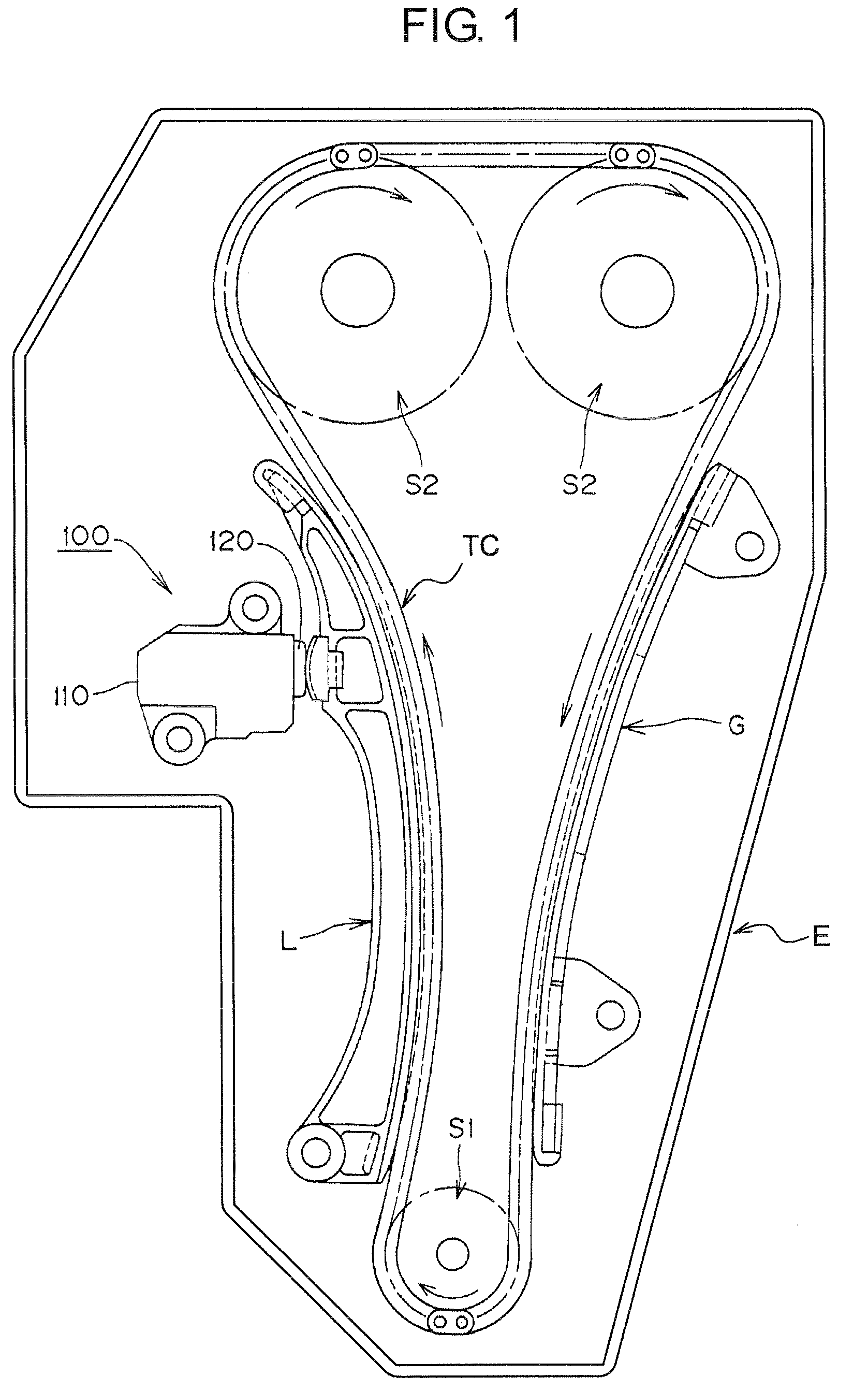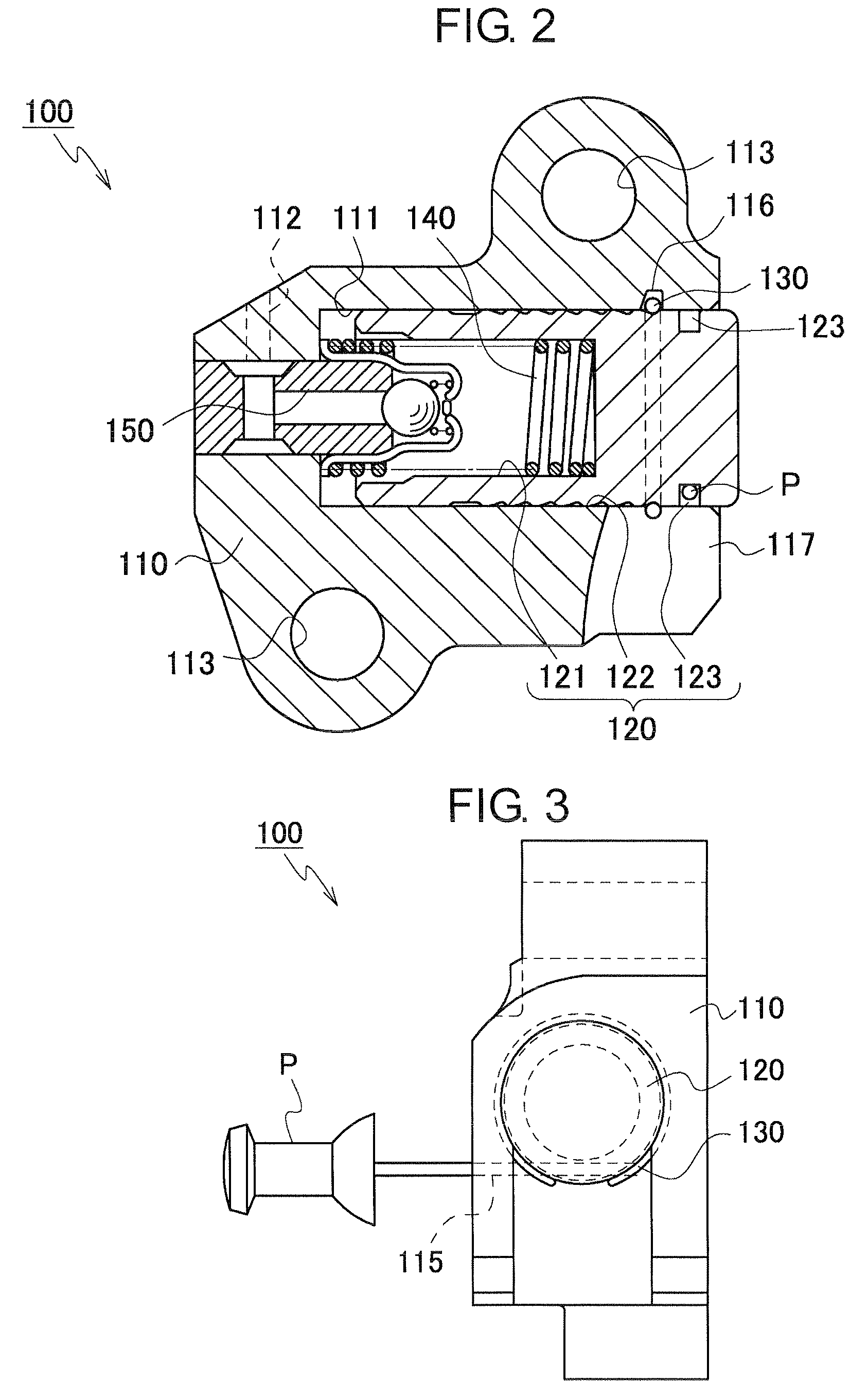Chain tensioner
a chain tensioner and tensioner technology, applied in the direction of belts/chains/gearings, mechanical equipment, belts/chains/gearings, etc., can solve the problems of reducing the adjustment range of each individual tensioner, restricting the retraction of the plunger, and reducing the manufacturing cost. , the effect of preventing the plunger from seizing
- Summary
- Abstract
- Description
- Claims
- Application Information
AI Technical Summary
Benefits of technology
Problems solved by technology
Method used
Image
Examples
Embodiment Construction
[0042]As shown in FIG. 1, a chain tensioner 100 is used in the timing drive of an engine E. The timing drive comprises an endless chain TC, driven by a crankshaft sprocket S1, and in driving relationship with two camshaft sprockets S1 and S2. A pivoted tensioner lever L, in sliding contact with a span of the chain TC that travels from sprocket S1 to sprocket 22, guides and maintains adequate tension in the chain. The tensioner lever L is pivoted on the engine E and biased into engagement with the chain by a protruding plunger of the chain tensioner 100. A stationary guide G, fixed to the engine E, is in sliding contact with a span of the chain that travels from sprocket S2 toward sprocket S1.
[0043]As shown in FIGS. 2 and 3, the tensioner 100 comprises a housing 110, a hollow cylindrical plunger 120, slidable in and protruding from an opening at the end of a plunger-accommodating hole 111 in the housing. The tensioner also comprises a resilient C-ring 130, a plunger-biasing spring 14...
PUM
 Login to View More
Login to View More Abstract
Description
Claims
Application Information
 Login to View More
Login to View More - R&D
- Intellectual Property
- Life Sciences
- Materials
- Tech Scout
- Unparalleled Data Quality
- Higher Quality Content
- 60% Fewer Hallucinations
Browse by: Latest US Patents, China's latest patents, Technical Efficacy Thesaurus, Application Domain, Technology Topic, Popular Technical Reports.
© 2025 PatSnap. All rights reserved.Legal|Privacy policy|Modern Slavery Act Transparency Statement|Sitemap|About US| Contact US: help@patsnap.com



